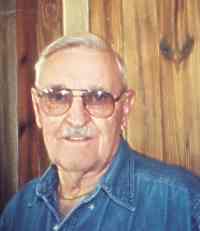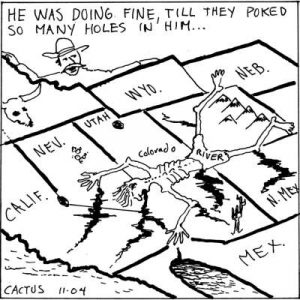Article by Marcia Darnell
Veterans – November 2004 – Colorado Central Magazine
HOMELAKE IS APTLY NAMED: It’s a lake, with trees and fish and peaceful waters, and it’s a home, the oldest veterans’ home in Colorado.
Homelake was founded in 1891 as the Colorado Soldiers’ and Sailors’ Home. Adair Wilson, a state senator from Del Norte, had passed legislation to establish a veterans’ home in the San Luis Valley a few years earlier. The site near Monte Vista was determined by the donation of land by two Monte Vista families, who continued to farm the acreage around the home for years. There was also a dairy on the property.
The original donation included perpetual water rights plus 90 artesian wells, 1,000 cottonwood trees, rock and sand with which to build, and a small swampy lake, then called Stanger Lake. The donations totaled $24,500, a generous sum at the time.
The first buildings, a hospital and barracks, went up in 1891. Those structures bit the dust in the 1960s, but the old administration building, finished in 1898, still stands. It’s made of rhyolite stones from a local quarry, with stone banding around the windows.
Originally, the first floor was offices and the second employee apartments. The office space eventually took over the whole building. A fire in 1920 damaged the roof, which was replaced. Otherwise the building is as it was built.
Other buildings, old and new, rest along winding roads named for war heroes. (The administration building is at the corner of Patton and MacArthur.) War artifacts, like planes and big guns, remind visitors why Homelake is here.
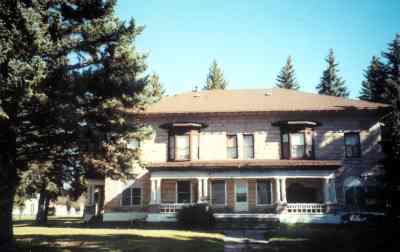
The veterans cemetery began business in 1891 as well, with the internment of Freeman Morris, a Civil War veteran who served with the Colorado Volunteers and fought at Glorieta Pass.
The cemetery is movie beautiful, featuring trees, greenery and concentric circles of white headstones showcasing a history of war. At the center of the 5,000 graves a monument rises, topped by a statue of a Civil War soldier. The monument was erected in 1912 to honor the veterans of the Civil and Spanish-American wars.
THE COLORADO NATIONAL GUARD has since dedicated a monument at Glorieta Pass in New Mexico to honor the state’s first veterans.
State Sen. Lewis Entz has long been an advocate for the center. He jokes that his middle initial, “H,” stands for Homelake.
“When my twin sister and I were brought home from the hospital, we went by Homelake,” he says. “It’s been in my mind ever since.”
Entz remembers an old cannon in the compound, which was melted for scrap iron during World War II.
“I had two sisters and a brother-in-law who worked at Homelake,” Entz says. “They lived in the cottages there.”
The lake was later dredged and deepened. It was renamed Sherman Lake, for Sherman Avenue, which led from the lake to Monte Vista. Later the lake was sold to the state Division of Wildlife as Home Lake. It was dredged and cleaned during last year’s drought and sports a wheelchair accessible fishing pier.
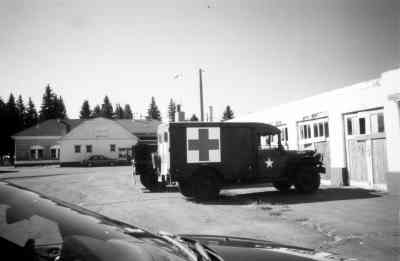
The compound includes a nursing home housing 60 and a domiciliary that’s home to 46.
“It’s the only domiciliary unit in the state,” says Entz. “Couples can come and live there, like assisted living. They have meals at the nursing home, and medical care.”
Other amenities at Homelake include a wood working shop, a ham operator station, a pool hall, an outpatient clinic for veterans, and a pavilion for picnics, donated by the Disabled American Veterans.
Another 1898 building, the Paden-Meyer Memorial Chapel, also serves as the compound’s library and post office. Homelake has its own zip code, 81135. A Korean War ambulance resides at Homelake, and still serves in parades.
All is not picturesque at Homelake, though. Several of the buildings are badly in need of repair. The chapel has been closed due to a large crack in one wall and the cottages have been declared uninhabitable. Entz is working with the state legislature, but it’s a battle.
“I fight for every dollar I get for Homelake,” he says. “If it was in the Metro Denver area I’d have no problem, but it’s 250 miles away.
“One time I had the money in the budget to tear down or rehabilitate some buildings and to build a new domiciliary unit, with apartments, but the financial situation we have….”
Entz is working with others to improve the center’s financial and physical health. Part of that includes trying to get historic designation for some of the buildings.
“If they don’t have it, they should,” he says. “We have to figure out a way to go after some grants or something to try to get those buildings back in shape.”
The cemetery needs to be enlarged as well. There are fewer than 10 unoccupied gravesites left.
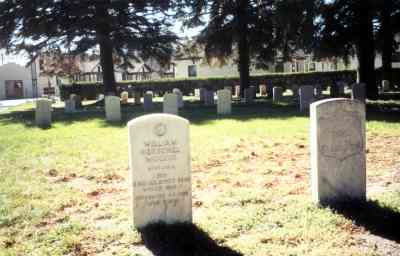
Some of Homelake’s land has been sold to DOW, but 17 acres remain for the expansion of the compound and cemetery. Entz would like to build another nursing home, with cottages for low-income employees of Homelake. Others have suggested the addition of a war museum and a community center.
The problem, as always, is money.
“It’s an endless battle,” says Entz, “but worthwhile.”
Marcia Darnell lives and writes in Alamosa and sometimes enjoys lunch at the pretty, peaceful lake.


